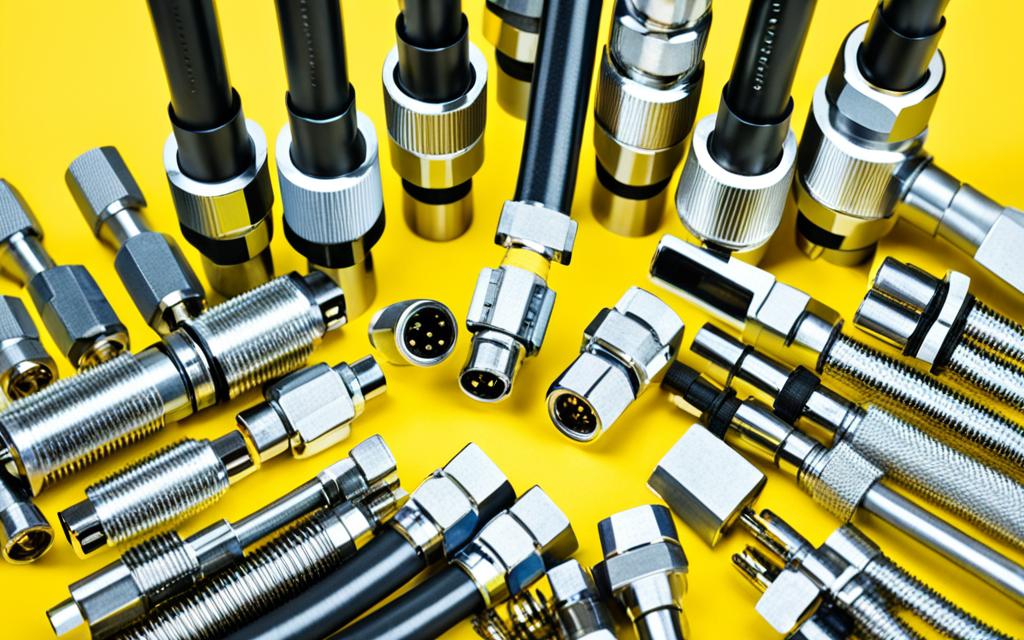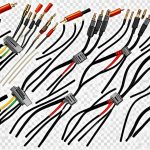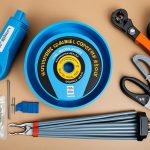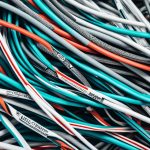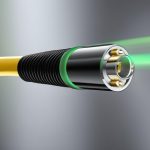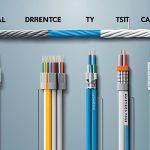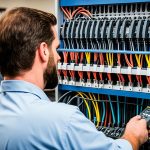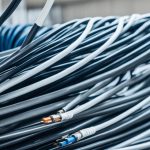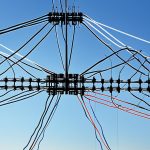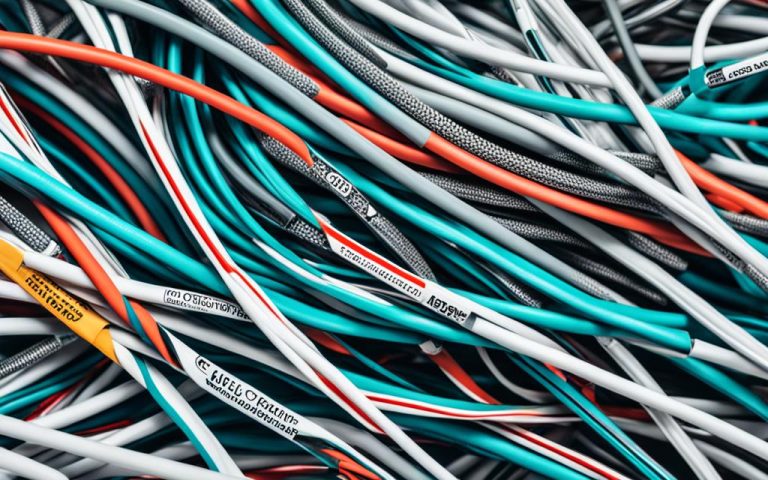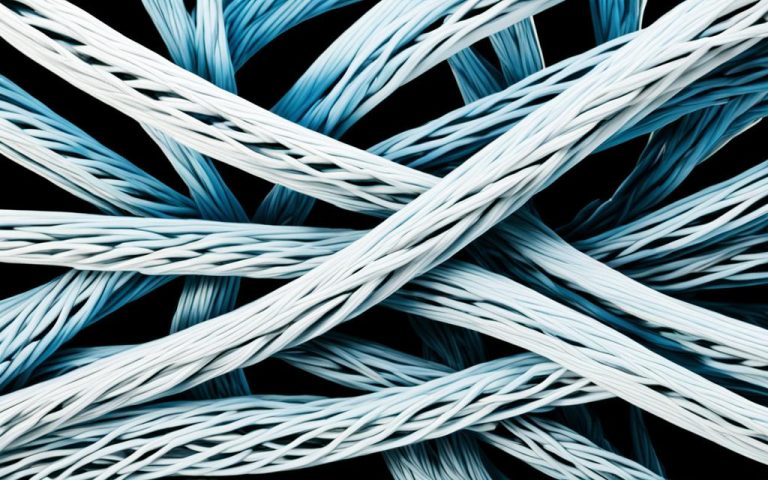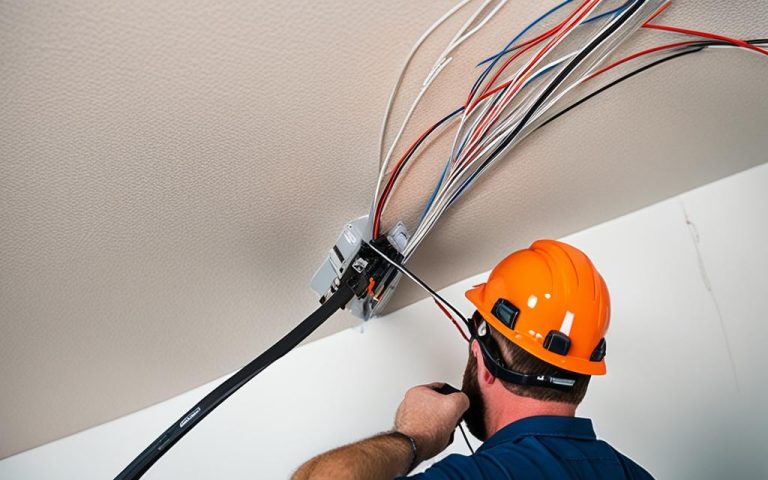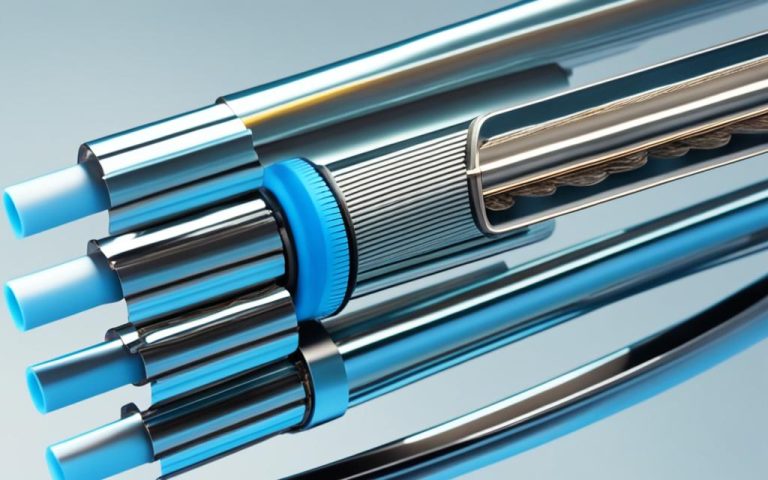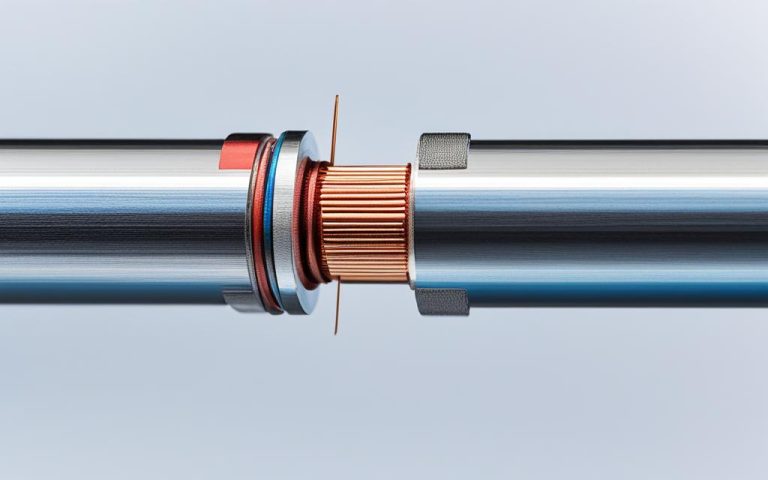Coaxial cable accessories are a vital component in optimizing the performance and reliability of your coaxial network. These accessories, including antennas, surge protectors, and various types of cables, help ensure a strong and consistent signal strength, especially in areas with weak outside signals. By investing in the right accessories, you can enhance the functionality of your network and guarantee a robust setup.
To make the most of your signal booster system, it’s crucial to understand the different types of coaxial cable accessories and their specific applications. From cellular antennas for enhancing signal strength to coaxial connector types for secure connections, each accessory plays a crucial role in the overall performance of your network.
In the upcoming sections of this article, we will dive deeper into the various accessories available and provide valuable insights on cellular antennas, coaxial connector types, and different coaxial cable options. By the end, you’ll have a comprehensive understanding of the essential accessories needed to enhance the functionality of your coaxial network.
Cellular Antennas for Enhancing Signal Strength
When it comes to boosting signal strength and ensuring optimal performance of your signal booster system, cellular antennas are a crucial accessory. These antennas play a vital role in capturing and transmitting signals, allowing you to achieve reliable connectivity and enhanced signal strength.
Depending on your specific needs and location, you have a variety of cellular antenna options to choose from. Three commonly used cellular antenna types are:
- Yagi Antennas: Yagi antennas are directional antennas that focus signal reception and transmission in a specific direction. They are ideal for long-range applications, particularly in rural areas with weak outside signals. The Yagi antenna’s increased gain allows for improved signal strength and coverage.
- Omni Antennas: Omni antennas, also known as omnidirectional antennas, provide 360-degree signal coverage. These antennas are suitable for urban and suburban areas where signal strength may vary from multiple directions. Omni antennas are designed to pick up signals from all directions, effectively improving signal reception and transmission.
- LPDA Antennas: LPDA (Log-Periodic Dipole Array) antennas are versatile antennas that offer a wide frequency range and excellent signal reception capabilities. They are effective in both urban and rural areas and are known for their wide bandwidth, making them suitable for various applications.
Each type of cellular antenna has its own advantages and applications. It’s essential to consider factors such as your location, signal strength, and coverage requirements before selecting the most suitable antenna for your setup.
“Cellular antennas are indispensable for enhancing signal strength and ensuring reliable connectivity. By choosing the right antenna type, you can optimize your signal booster system’s performance and enjoy consistent signal reception throughout your desired area.”
Investing in high-quality cellular antennas is crucial for a successful signal booster system installation. These antennas, when combined with other essential coaxial cable accessories, such as surge protectors and quality coaxial cables, can significantly enhance your signal strength and improve overall network functionality.
| Cellular Antenna Type | Advantages | Applications |
|---|---|---|
| Yagi Antennas | Increased gain, long-range coverage | Rural areas with weak outside signals |
| Omni Antennas | 360-degree signal coverage | Urban and suburban areas |
| LPDA Antennas | Wide frequency range, versatile | Urban and rural areas |
By considering the advantages and applications of different cellular antenna types, you can select the most suitable option to enhance your signal strength and ensure reliable connectivity.
Coaxial Connector Types for Secure Connections
Coaxial connectors are vital components for establishing secure and reliable connections between cables and devices. When it comes to coaxial networks, understanding the different types of connectors is essential in order to choose the right one for your specific application.
There are three primary types of coaxial connectors:
- Male Connectors: These connectors have a protruding pin (known as the male) that fits into the center conductor of the female connector. Male connectors are commonly used for transmitting signals from one device to another.
- Female Connectors: Female connectors feature a receptacle that accepts the male pin. They are typically used to receive signals and provide an interface for connecting devices.
- Genderless Connectors: Also known as universal connectors, genderless connectors eliminate the distinction between male and female connectors. They allow for flexibility in both connection and orientation, enabling secure connections with any other genderless or traditional male/female connector.
Selecting the appropriate coaxial connector is crucial to ensure a secure and stable connection that minimizes signal loss and interference. It is essential to match the connector types of your cables and devices to establish a strong and reliable connection within your coaxial network.
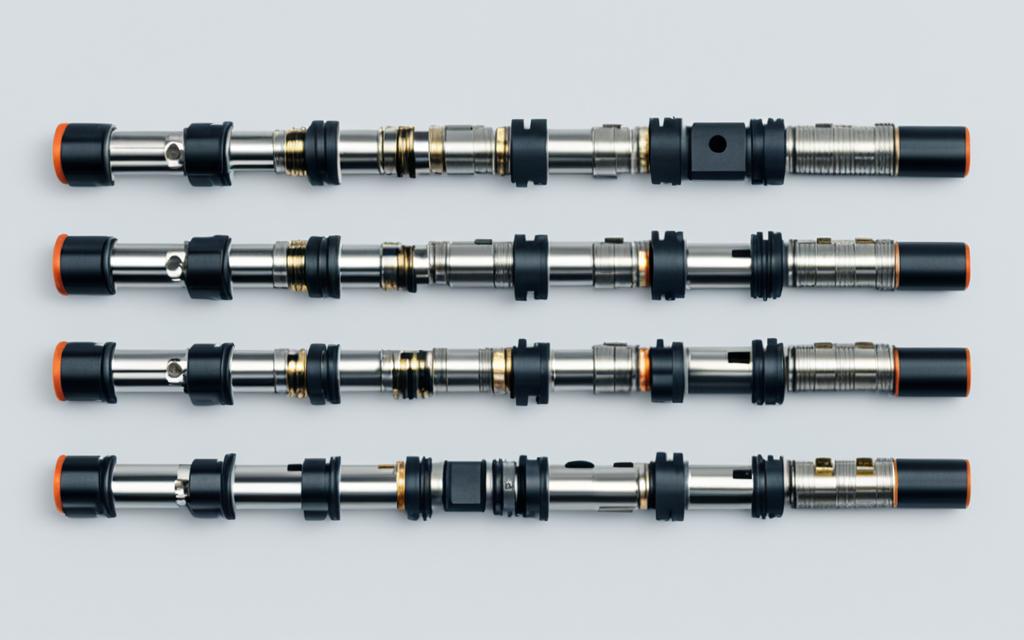
Understanding Coaxial Cable Types for Reliable Transmission
When it comes to setting up a reliable and efficient coaxial network, choosing the right cable type is crucial. Coaxial cables are designed with specific applications and transmission requirements in mind, and understanding their differences can help you make an informed decision for your needs.
There are two commonly used coaxial cable types: RG Coax Cables and LMR Coax Cables. Let’s take a closer look at each:
RG Coax Cables
RG (Radio Guide) Coax Cables have been widely used in various industries for decades. These cables provide reliable signal transmission and are available in different versions, including RG-6, RG-11, and RG-58. They are commonly used for applications such as cable television, satellite communication, and CCTV systems.
LMR Coax Cables
LMR (Land Mobile Radio) Coax Cables, on the other hand, are specifically designed for wireless communication systems. They offer superior performance, especially in environments susceptible to signal interference and high power requirements. LMR Coax Cables are available in various sizes, including LMR-240 and LMR-400, to accommodate different signal frequency and power demands.
Choosing between RG and LMR Coax Cables depends on your specific needs and the application requirements. RG Coax Cables are a cost-effective choice for standard applications, while LMR Coax Cables are ideal for demanding environments where reliable transmission is essential.
It’s important to note that the performance of coaxial cables can also be influenced by factors such as cable length, signal frequency, and environmental conditions. Consulting with a professional or referring to manufacturers’ specifications can help ensure optimal cable selection in your specific scenario.
Coaxial cable types play a crucial role in ensuring reliable transmission within your coaxial network. By selecting the appropriate cable type, you can maximize signal strength and minimize signal loss for consistent and efficient communication.
Comparative Table: RG Coax Cables vs. LMR Coax Cables
| Coaxial Cable Type | Key Features | Applications |
|---|---|---|
| RG Coax Cables |
|
|
| LMR Coax Cables |
|
|
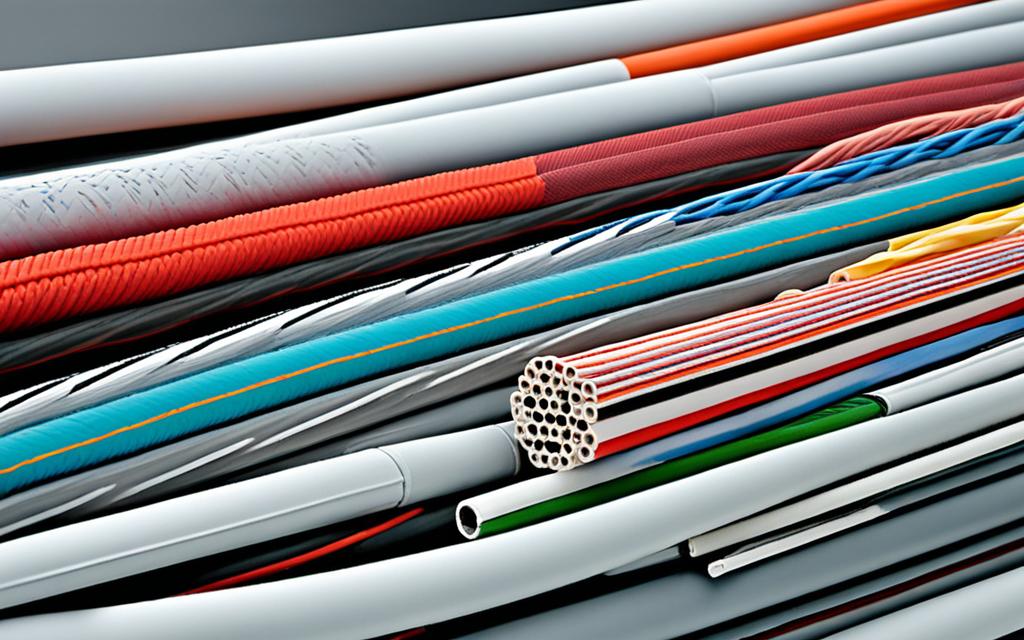
Understanding the different types of coaxial cables available can help you make an informed decision for your coaxial network setup. By selecting the right coaxial cable type, whether it’s RG Coax Cables or LMR Coax Cables, you can ensure reliable transmission and optimize the performance of your network.
Conclusion
Coaxial cable accessories play a crucial role in enhancing the functionality of your coaxial network, ensuring optimal performance and reliability. By investing in the right accessories, such as cellular antennas, coaxial connectors, and the appropriate cable types, you can maximize the potential of your network and stay connected in any situation.
When it comes to boosting signal strength in rural areas or locations with weak outside signals, cellular antennas like Yagi, Omni, and LPDA antennas are essential. These antennas help capture and amplify the available signals, providing a stronger and more consistent connection for your devices.
For secure and reliable connections, choosing the right coaxial connectors is vital. Male connectors, female connectors, and genderless connectors offer different options for ensuring a secure and uninterrupted flow of data between cables and devices.
Additionally, selecting the appropriate coaxial cable types is crucial for reliable transmission. Whether you opt for RG coax cables or LMR coax cables, understanding their characteristics and choosing the right cable for your specific needs is key to maintaining strong and uninterrupted data transmission.
By incorporating these essential coaxial cable accessories into your network setup, you can enhance its functionality, boost signal strength, and ensure a reliable and efficient connection. Invest in high-quality coaxial cable accessories to optimize your network’s performance and enjoy seamless connectivity wherever you are.
FAQ
What role do coaxial cable accessories play in optimizing the performance of a coaxial network?
Coaxial cable accessories play a crucial role in optimizing the performance and reliability of your coaxial network. They ensure strong and consistent signal strength, especially in areas with weak outside signal.
What are the different types of cellular antennas available for enhancing signal strength?
Depending on your specific needs and location, you can choose between Yagi antennas, Omni antennas, and LPDA antennas to boost signal strength and ensure optimal performance of your signal booster system.
What are coaxial connectors and why are they important?
Coaxial connectors are essential for secure and reliable connections between cables and devices. There are different types of coaxial connectors available, and understanding them can help you choose the right one for your specific application.
What are the different types of coaxial cables and their specific applications?
Coaxial cables come in various types, each designed for specific applications and transmission requirements. Knowing the different coaxial cable types can help you choose the right one for your needs.
How can investing in high-quality coaxial cable accessories benefit my network?
Investing in high-quality coaxial cable accessories, such as cellular antennas, coaxial connectors, and the appropriate cable type, can enhance the functionality and reliability of your coaxial network. It ensures a robust setup, boosts signal strength in rural areas, facilitates secure connections, and maximizes the potential of your network, keeping you connected wherever you are.

